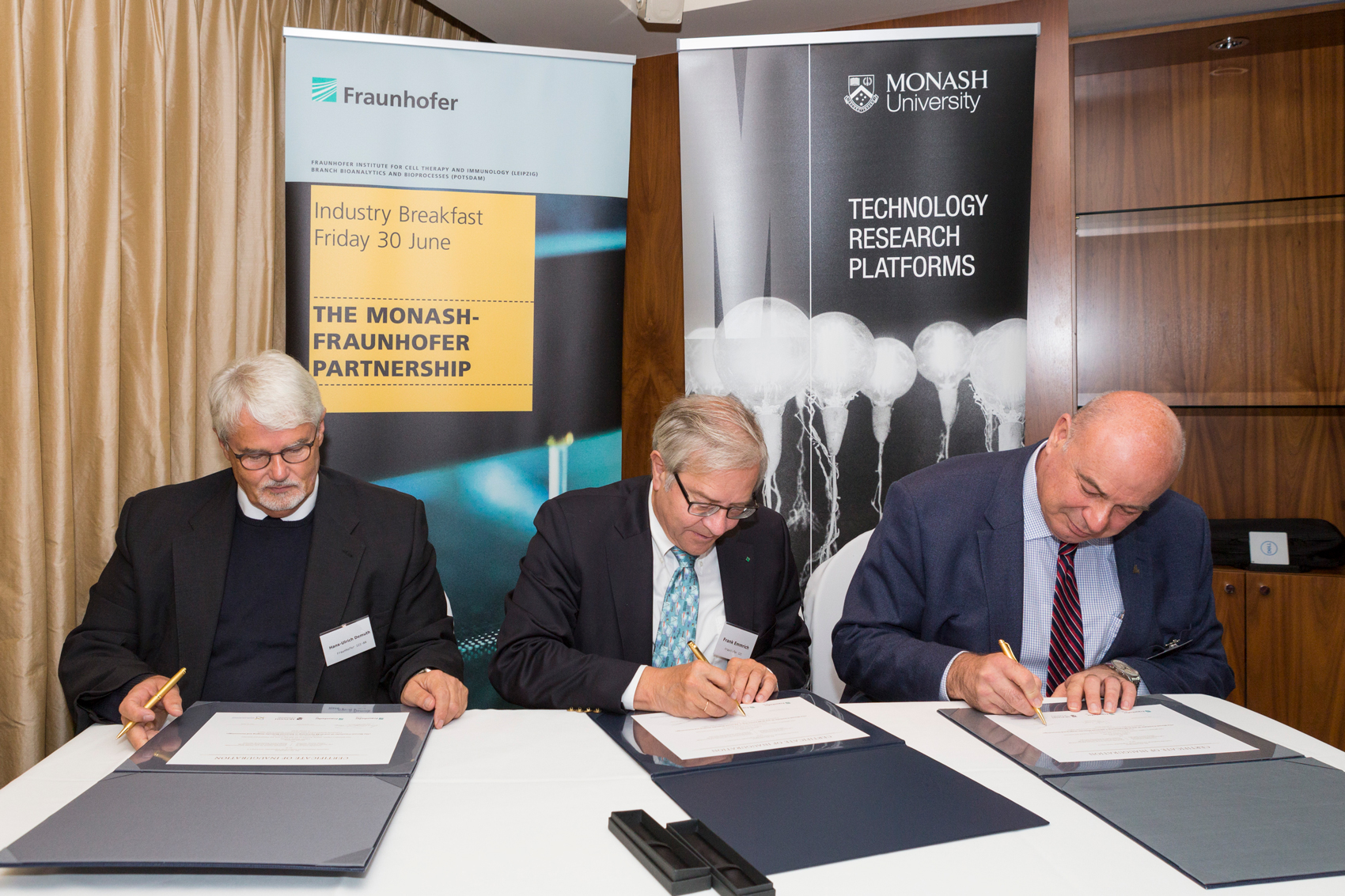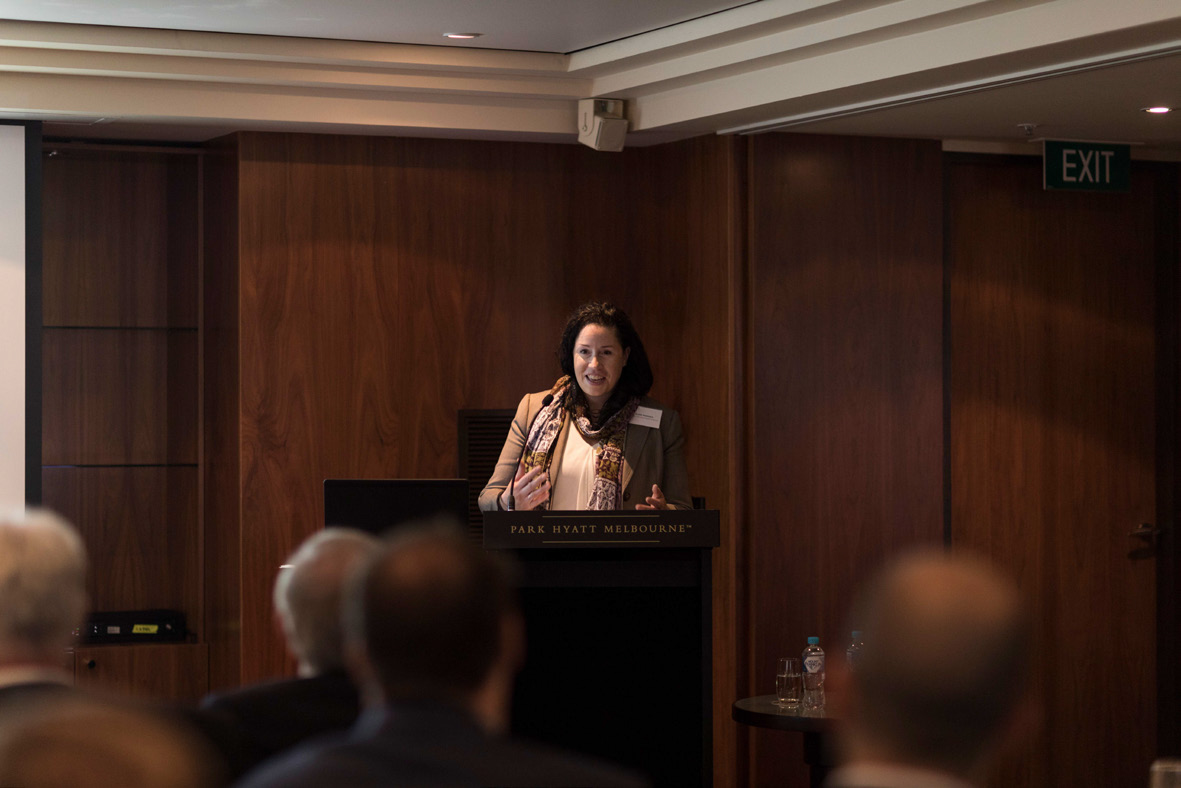Fraunhofer Institute for Cell Therapy and Immunology sets up research unit at Monash University in Melbourne, Australia
The Fraunhofer IZI in Leipzig and the Bioanalytics and Bioprocesses branch (IZI-BB) in Potsdam, Germany, have got the ball rolling on a new research unit at Monash University in Melbourne, Australia. The collaboration is aimed at the joint development of innovative technologies and products in the fields of immunology and imaging.


On August 1, 2017, the Fraunhofer IZI and the Fraunhofer IZI-BB started setting up a research unit at Monash University in cooperation with the ARC Centre of Excellence in Advanced Molecular Imaging. Alternating extended stays for visiting German and Australian researchers, joint workshops and symposiums are also planned with an eye to boosting scientific exchange and getting cooperation projects off the ground. The partners expect that the collaboration will lead to increased access to the Asia-Pacific and European research and economic landscape. High-ranking representatives from both institutions came together in June 2017 and signed a cooperation agreement in this regard in the presence of Dr Amanda Caples (Lead Scientist to the Victorian Government), representatives of the German embassy in Australia and numerous other guests from industry and research, thus laying the foundation for the new research group.
“Fraunhofer is seen worldwide as an example of best practice in getting innovation from universities out into industry and also enabling these inventions and discoveries to have real impact,” comments Professor Ian Smith, Monash University Vice-Provost for Research & Research Infrastructure.
Professor Frank Emmrich, Director of Fraunhofer IZI, adds “We are excited about tapping into the exceptional biomedical research capabilities at Monash University and helping to translate and promote Australian research on a global scale.”
Dr Judith Reinhard, Head of Science and Innovation at the German Embassy in Australia, remarked “The international collaboration would also have the benefit of strengthening relationships between the German and Australian research communities and respective industries.”
The scientific focus of the joint research activities will initially lie on the area of molecular imaging and structure determination. The ARC Centre of Excellence in Advanced Molecular Imaging is a globally leading research institute in this field. Work involving cryo-electron microscopy (cryo-EM) is pivotal here. This technology allows complex protein structures to be viewed and analyzed, working in a similar way to computer tomography used in medicine. The three-dimensional structure of the object under examination is reconstructed using a computer-aided imaging procedure that puts together a number of two-dimensional projection images taken from various angles. As part of the cooperation, methods and instruments, among other things, are to be developed to improve current techniques. Furthermore, molecules that play a significant role in the context of therapy design are to be analyzed in detail and consequently optimized. In this context, the cryo-EM technology will be used to elucidate the 3D structure of human meprin alpha.
"The cooperation with the Fraunhofer IZI represents an important step for us in driving forward and improving the development, synthesis and analysis of our own drug candidates,” comments Professor James Whisstock, Director of the ARC Centre of Excellence in Advanced Molecular Imaging.
The Fraunhofer researchers will contribute their expertise in applied research here. This includes the development of therapeutic agents for the treatment of fibrotic, neurodegenerative and oncological diseases, besides technical skills, e.g. in automating the preparation and analysis of biological samples. A further focus of the collaboration will be the cell-free production of proteins for molecular analytics.
“By working together with our Australian colleagues in the field of molecular imaging and structural protein analysis and by drawing on their expertise, we hope to gain new momentum in the development of new drugs and diagnostic procedures,” remarks Professor Hans-Ulrich Demuth, Director of the Fraunhofer IZI-BB, summarizing the objectives of the institute’s work in Australia.
The cost of setting up the research unit is initially being supported by the Federal Ministry of Education and Research with EUR 200,000 in funding to cover a two-year period, awarded as part of the Federal Government’s Strategy for the Internationalization of Education, Science and Research. With a view to the long term, plans are in place to attract additional funding for joint research projects and to set up a Fraunhofer Project Center at Monash University further down the line.
![BMBF_CMYK_Gef_M [Konvertiert] Sponsored by the BMBF](/en/press/press-releases/fraunhofer-institute-for-cell-therapy-and-immunology-sets-up-research-unit-at-monash-university-in-melbourne-australia/jcr:content/fixedContent/pressArticleParsys/textwithasset/imageComponent/image.img.jpg/1501407622402/BMBF-gefoerdert-2017-en.jpg)